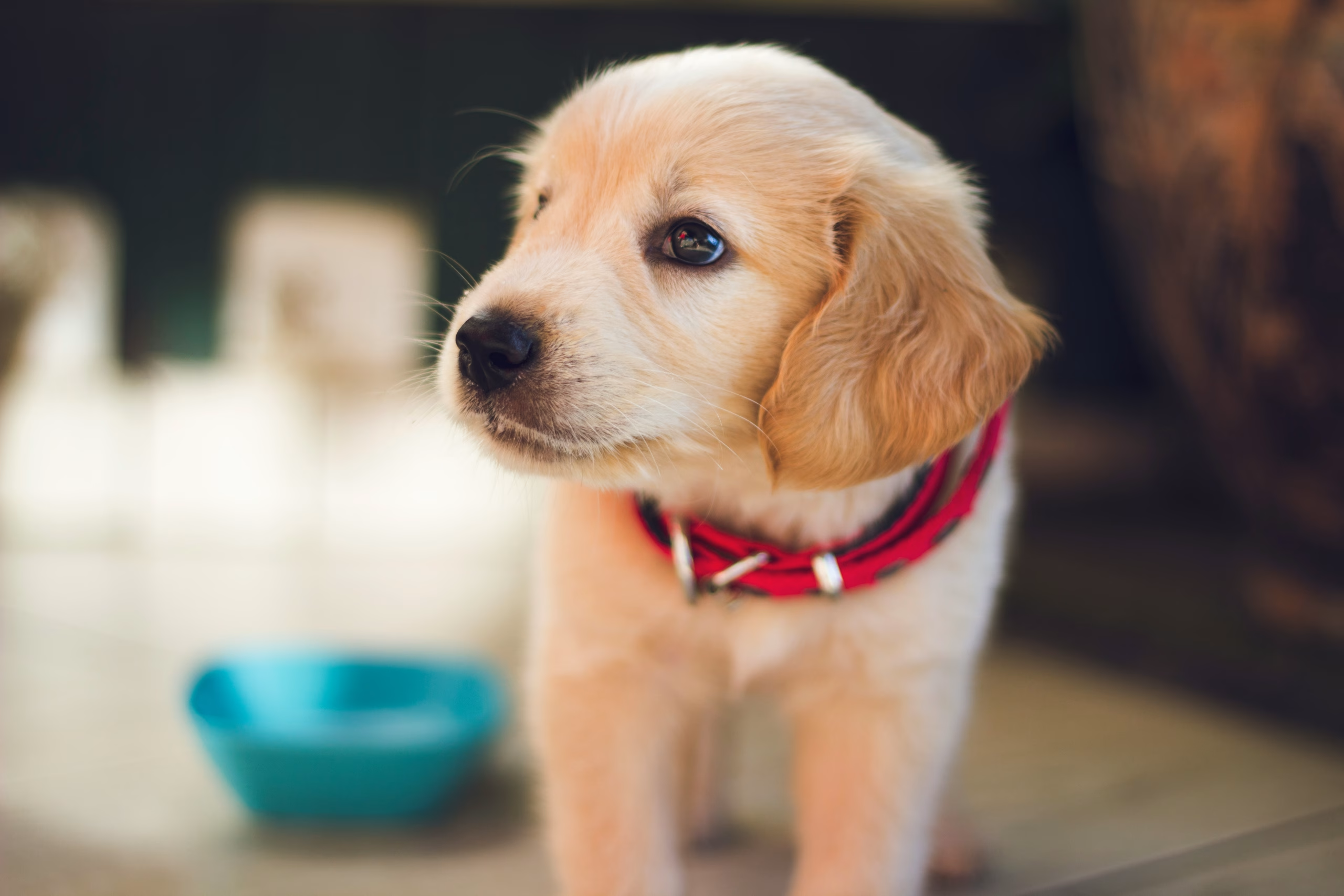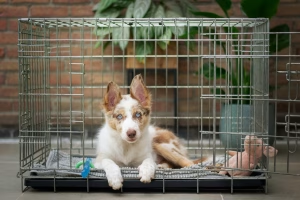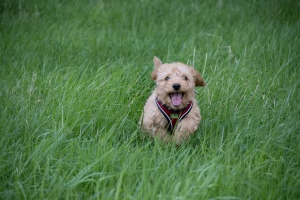
Puppy Training Near Me: The Foundations of Dog Training for Puppies
When people search for puppy training near me, it’s usually because the excitement of welcoming a new puppy has turned into a real challenge. Toilet accidents, sleepless nights, sharp teeth, and constant chewing can overwhelm even the most prepared family. What most people want isn’t just a well-trained puppy; they want a calm, happy dog who feels secure and can grow into the companion they imagined.
That’s why I prefer to talk about dog training for puppies as much more than teaching obedience commands. Yes, sit, stay, and recall are important, but they are surface-level if the puppy’s underlying needs, language, and emotional state are not addressed. This blog brings together practical advice from my years as a dog behaviourist to help you understand what really matters when raising a puppy.

Bringing a Puppy Home
The first days and weeks at home shape everything that follows. Puppies thrive on security and routine. To give them the best start:
- Provide constant access to fresh water.
- Feed small meals three to four times a day.
- Restrict them at first to one or two rooms so they don’t become overwhelmed.
- Offer a comfortable bed and a designated toilet spot.
- Remove items they could chew or swallow.
- Give them toys and chews to satisfy their natural urge to gnaw.
- Ensure plenty of human company without overstimulation.
The calmer the environment at the start, the easier it will be to build on foundations later.
Toilet Training
Successful toilet training comes down to timing and consistency. Watch for signs such as sniffing, circling, or whining. Take your puppy outside (or to a training mat if needed) after meals, drinks, naps, and play.
Introduce a simple cue such as “be quick” while they are toileting, then reward calmly with a treat. Avoid overexcited praise or phrases like “good boy/girl” which you might use in other contexts — this can create confusion.
If accidents happen indoors, quietly clean with a pet odour remover and move on. Do not scold, as this risks making your puppy fearful of toileting near you. If you catch them in the act, gently redirect them to the right spot.
Living in a flat or without a garden? Training mats can bridge the gap. Start with mats in each room, then gradually reduce until your puppy is confident toileting outside.
Crates and Night-Time Settling
A crate can be helpful, as many puppies avoid soiling their bed. But it must be introduced gradually and positively. Keep the door open at first, make the crate cosy, and pair it with rewards. Close the door only for short periods and always before whining begins.
Night-time is often the hardest adjustment. At first, sleep close to your puppy so they feel secure. Over several nights, reduce your involvement, limiting check-ins while still showing you are nearby. This teaches independence without leaving them feeling abandoned.

Managing Nipping and Biting
Puppies explore the world with their mouths, but their sharp teeth can hurt. Always set the terms of play yourself. When nipped, redirect to a chew toy. If ignored, withdraw attention by turning away or gently placing the puppy in another room for a short time.
The key is calm persistence. Show that nipping never gets a reward but chewing the right toy always does. Puppies can be tenacious, so consistency is essential.

Overexcitement and Zoomies
Short bursts of frantic energy are natural. As long as your puppy isn’t being destructive or invasive, allow them to release that energy safely. Zoomies are a sign of normal development, not misbehaviour.

Vaccinations, Microchipping, and Early Health
Most puppies receive vaccinations at 6–10 weeks, usually two doses. Follow your vet’s advice on when to safely take your puppy outside. Microchipping is a legal requirement in the UK and ensures your puppy can be identified if lost.
Health and safety form part of your puppy’s essential needs. Pain or discomfort can show up as reactivity or resistance, so always rule out medical issues before assuming behavioural causes.

Exercise Guidelines
Too much exercise can harm growing joints. A simple guide is ten minutes of structured exercise per month of age, up to twice daily. So, at three months old, aim for two 30-minute walks. However it is worth noting that many will exceed that exercise many times over running about the home so be sure to adjust to your individual puppy’s needs.

Leads, Collars, and Harnesses
I often recommend a harness for puppies, especially if they pull. This avoids pressure on the neck and makes guiding them easier. Choose a non-restrictive harness that allows natural movement. A collar is fine for calm walkers but not essential for lead training.
Beyond Training: Meeting a Puppy’s Needs
To raise a confident dog, we must look beyond commands and meet four fundamental needs:
- Physiological — food, water, sleep, comfort.
- Safety — freedom from pain and fear, secure environments.
- Belonging — clear roles within the family: nurturer, protector, authority, and coach.
- Esteem — confidence in you as a leader, confidence in environments, and confidence in what behaviour is expected.
A puppy whose needs are consistently met develops trust and predictability, which makes obedience training far easier.
Learning Puppy Language
Puppies communicate constantly through posture, facial expressions, and subtle signals. Early signs of stress include staring, body stiffness, lip licking, or turning away. If ignored, these may escalate to growling, barking, or snapping.
Good behavioural work means spotting these early signals and guiding calmly before things spiral. Timing is everything. When you learn your puppy’s language, you can intervene at the whisper before it becomes a shout.

Emotional State and Environment
A puppy’s environment has a huge effect on their emotional state. Too much stimulation — noisy streets, busy parks, constant visitors — can overwhelm. Repeated stress rehearses unwanted behaviour.
I often advise families to manage the environment with simple steps:
- Close curtains to stop window barking.
- Use stairgates to create calm zones.
- Rent secure fields for safe, controlled off-lead time.
- Choose quieter routes until the puppy is ready for more.
Helping puppies feel safe allows them to learn calmly. Leadership, not exhaustion, is what teaches trust.

Leadership: Calm, Convincing, Consistent
Ultimately, puppies look to us for leadership. Not in a dominating sense, but as a source of clarity.
- Calm guardians show there is nothing to worry about.
- Convincing guardians prove they can handle challenges.
- Consistent guardians ensure the message never changes.
Leadership means stepping into all four roles: nurturer, protector, authority, and coach. A puppy that sees you providing food, safety, boundaries, and training no longer feels the need to take charge themselves. This creates stability that no amount of obedience drills can replace.
Case Study: Daisy the Labrador in Clapham
My client Emma, who lived in Clapham, London, called me three weeks after bringing home her Labrador puppy, Daisy. By that point the whole family were running on empty. Daisy barked every night, chewed through the legs of the dining chairs, and still hadn’t mastered toilet training. Emma told me that after one particularly hard night she found herself typing puppy training near me in London into her phone at 2 a.m., desperate for help the next morning.
When I arrived, it was clear Daisy wasn’t a “bad” puppy — she was simply overwhelmed. Her world had expanded too quickly. She had the run of the entire house, constant attention from Emma’s three children, and a stream of visitors eager to meet the new arrival. What Daisy didn’t have was downtime. Puppies, like children, need rest and predictable structure to process their environment. Without it, they become overstimulated and anxious.
We scaled things back straightaway:
- Daisy was restricted to two rooms, making the environment calmer and easier to manage.
- I helped Emma introduce scheduled nap times, teaching the children that leaving Daisy to sleep was just as important as play.
- We set a clear toilet routine, guiding Daisy to the same outdoor spot each time.
- At night we used short, silent check-ins rather than reacting to every whine, which helped her settle without learning to depend on constant attention.
Within two weeks the difference was remarkable. Daisy was sleeping through most of the night, chewing far less, and toileting consistently outside. Walks became calmer, visitors were no longer greeted with frantic jumping, and the whole household finally began to relax. Emma told me she’d stopped searching dog training for puppies near me because she now felt confident guiding Daisy herself.
The transformation wasn’t about piling on obedience commands. It came from meeting Daisy’s needs, learning to read her language, creating a calmer emotional state, and giving her consistent leadership. Once those pieces were in place, the “training” became straightforward. Daisy no longer felt the pressure to take charge — she could simply enjoy being a puppy.

Final Thoughts
When people search for puppy training near me, they often think the solution is more commands. In reality, the real answer lies in meeting needs, learning puppy language, creating a safe emotional state, and perfecting leadership. Training drills are important, but they sit on top of a much deeper foundation.
If you want to give your puppy the best possible start, take a look at my services at www.dogtraininginlondon.co.uk.

